Old Galway
THE CHANGING FACE OF KINGSHILL
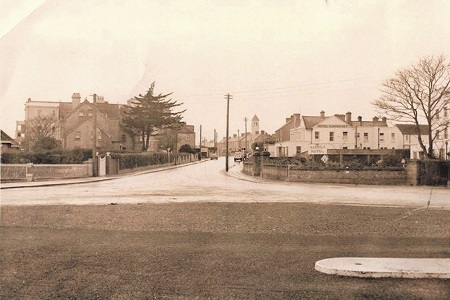
by Tom Kenny
Our first photograph today (courtesy of the National Library) is a bird’s eye view that was taken in 1953 and shows the Warwick Hotel at the top of the picture. Next to it on the right was the entrance to Lenaboy Park, and beyond that you can see part of Queeney’s shop. Next door was Doorley’s private house and then Mrs. Turke’s B&B called Osterley Lodge. Opposite, on the far side of the road was Billy Binn’s house and on the corner, as you can see, was a field with a lot of trees, much used as a playground by local children. This whole area was very prone to flooding and was occasionally rendered impassable as was the case with Hurricane Debbie.
On the near side of the road you can see part of the Galway Bay Hotel still under construction. It was being built by the Miss McDonaghs who owned St. Theresa’s Nursing Home a few doors away. They intended this building as a nursing home but their budget overran and they had to abandon the project. The building was eventually taken over by a building society and they sold it to Jack and Olive Smith. Jack’s brother George helped to convert it from a nursing home to a hotel and it opened as The Galway Bay Hotel in 1956.
TRAFFIC CHANGES IN GALWAY

by Tom Kenny
When the city was being constructed in medieval times, the streets and even the lanes must have appeared wide and spacious. The only kind of traffic they would have experienced then would have been pedestrian, horse or donkey and cart and maybe the odd wheelbarrow. We have two images for you today of the east side of Eyre Square the first (courtesy the National Library) dates from c.1890 and shows that type of traffic; The second (courtesy Galway County Library) shows the same area with motorised traffic. Since the latter was taken, the population has grown by 6 or 7 times, and of course, the traffic volumes have increased accordingly. So the Corporation had to make occasional changes to the bye-laws in relation to traffic.
On April 1st, 1963, a new thirty mile per hour speed limit for the city and the built up areas around it was introduced ‘for the well-being of the people’. It would affect all the main roads except part of the Oranmore Road near Merlin Park.
GALWAY SIMON COMMUNITY
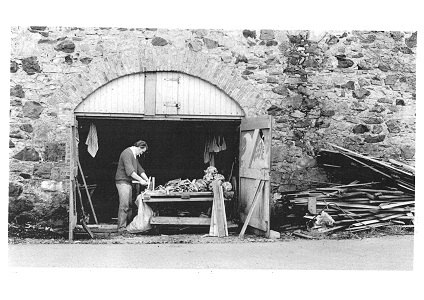
by Tom Kenny
In October 1979, two psychology students, Margaret Brehony and Kathy O’Grady teamed up with a philosophy student, Conall Mac Riocard and formed a group of volunteers. They started a twice weekly soup run to people who were sleeping rough in Galway. They made the soup and sandwiches at home and then they would do the run. They only met one person on their first night, but gradually, the numbers increased. They found that the experience of squeezing into a car, then picking one’s way over rubble, broken glass or perhaps rats, to a man lying in a corner, probably open to the sky, gave them an inescapable motivation to work towards the goal of a night shelter in Galway.
At the time, one of their clients slept in a pigsty opposite the Presentation Primary School, some in a railway siding near Lough Atalia, some in skips, in the bathing shelters on the prom, in a rat-infested cottage on Frenchman’s Lane, in cardboard boxes, one young man slept in a disused telephone box that had fallen down at Ballyloughane Beach and was suffering from pneumonia when they found him. In another case, they had to climb over an eight-foot fence in dark undergrowth behind the Claddagh Palace.
THE SCHOLARS OF ‘73
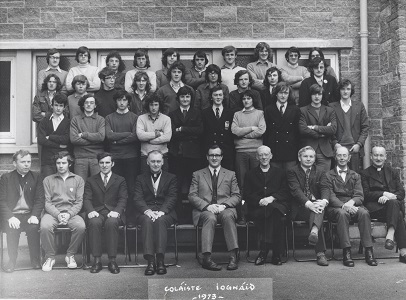
by Tom Kenny
What memories do you have of your schooldays? Here are some reminiscences of a few old ‘Jes-mugs’,
Seán Duignan recalls that “To tell the truth, back in the late 1940’s and early fifties, being condemned to ‘six of the best’ was not all that bad. Back then too, we were part of a ‘boys only’ set-up, wearing little peaked caps which we doffed while saluting with military precision whenever a cassock or a clerical collar hove into view. We spoke Irish at all times – being caught speaking English was a punishable offence – and Gaelic football, hurling, handball and rowing were the only acceptable sporting activities. ‘Foreign games such as rugby and God forbid, soccer were beyond the pale”.
Dick Byrne’s memories are musical –“Musically, we had a great time in the Jes, and it planted the love of singing and theatre in me that was to continue all my life”.
THE FISHMARKET
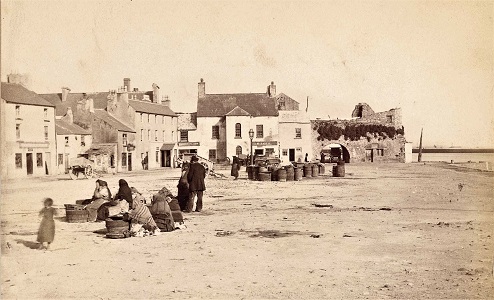
by Tom Kenny
The Village of Claddagh was a unique collection of thatched cottages arranged in a very random fashion, a place apart, occupied by a few thousand souls. They had their own customs, spoke mainly in Irish, intermarried each other, elected their own king and had a code of laws unique to the village. Virtually the entire male population was involved in fishing, but when they landed their catch, the women took over and they were the ones who went out and sold the product.
Many of these women had their own regular beat as they would go from door to door selling. Some would have their own private customers that they supplied but for others, the fish market was where they congregated and sold their fish. In earlier times, it was located in Bridge Street where there was a crane used for weighing the fish but, to say the least, conditions were primitive there.
ARMS OF THE CITY
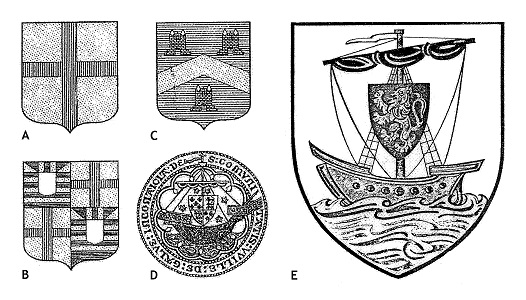
by Tom Kenny
A coat of arms is described as a heraldic visual design on an escutcheon surcoat or tabard. The coat of arms on the escutcheon forms the central element of the full heraldic achievement which in its whole consists of a shield, supporters, a crest and a motto. A coat of arms is traditionally unique to the armiger.
Since its foundation in the early 13th century, the town of Galway has used at least five different coats of arms. The first three of these did not, as far as is known, belong to the town proper but were used by townspeople for official purposes in the absence of specific town arms.
The earliest set, (A) comprising a red cross on a gold shield dates from about 1270 onwards and was those of the De Burgo family, Earls of Ulster. In 1368, the De Burgo possessions passed, by marriage, into the control of Edward Mortimer, Earl of March (in England) and Galway began to use his arms, now combined with those of his wife, through whom the earldom had come into his possession. In heraldry, the usual manner of representing an alliance of two great families is by dividing the shield into four parts and placing the respective arms in the opposite quarters. In this instance, (B) the upper left and bottom right quarters contain the original De Burgo arms and the other two quarters show the Mortimer arms (a series of horizontal bars of gold and blue with a superimposed plain silver shield).
LYDON’S RESTAURANT

by Tom Kenny
In October 1935, the local papers reported that Mr. Thomas Lydon was about to open a super restaurant, installed with the latest conveniences, over his well-known confectionery shop on Shop Street. “A masterpiece of Modernity. Its equipment is the most up-to-date procurable including a Major ‘Esse’ Cooker, Electric Magrini Toaster, Scott Electric Hot Plate, Cold Storage room and a Frigidaire Ice Cream cabinet. The entrance to the restaurant is through the handsome shop premises which have also been modernized and where the aromas of freshly made bread buns and cakes was mouth-watering. The work of the restaurant, which could seat 200 people, is carried on by a well-trained staff of about thirty”.
SAINT PATRICK’S CHURCH
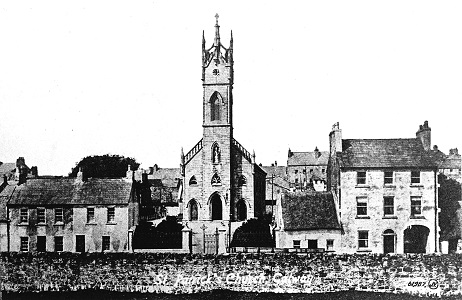
by Tom Kenny
This photograph of St. Patrick’s Church and part of Forster Street was taken from the Galway/Clifden Railway Line overlooking James Mahon’s Field where the circuses used to be long ago. It was taken c.1920.
When, in May 1836, Fr. Bartholomew Roche began building St. Patrick’s Church, it was well outside the city proper. It extended from the West Bridge to Grealishtown, numbered some 7,000 souls and was known as Bohermore Parish. The church opened for worship in 1837 but two years later, on the night of the ‘Big Wind’ the roof was blown off and Fr. Roche had to go on another begging tour. The repairs took some time but eventually the new church, though far from complete, was opened on January 11th 1842. It was blessed by the Bishop, Fr. Roche said the mass and the sermon was delivered by the famous temperance reformer, Fr. Theobald Matthew.
